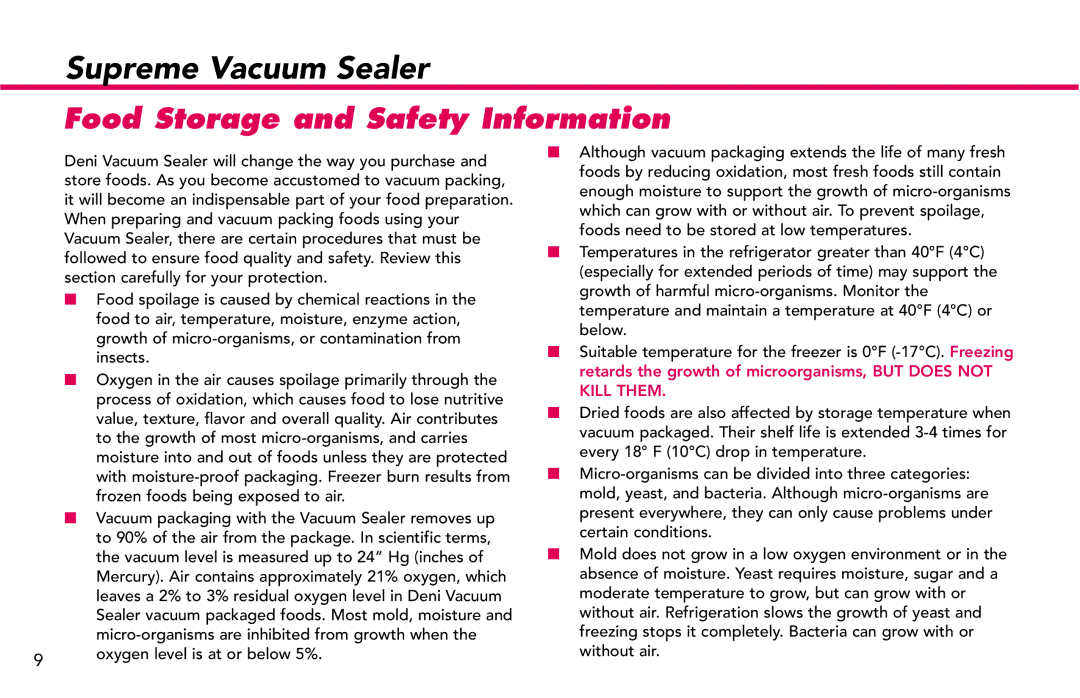Supreme Vacuum Sealer
Food Storage and Safety Information
Deni Vacuum Sealer will change the way you purchase and | ■ Although vacuum packaging extends the life of many fresh | ||
foods by reducing oxidation, most fresh foods still contain | |||
store foods. As you become accustomed to vacuum packing, | |||
enough moisture to support the growth of | |||
it will become an indispensable part of your food preparation. | |||
which can grow with or without air. To prevent spoilage, | |||
When preparing and vacuum packing foods using your | |||
foods need to be stored at low temperatures. | |||
Vacuum Sealer, there are certain procedures that must be | |||
■ Temperatures in the refrigerator greater than 40°F (4°C) | |||
followed to ensure food quality and safety. Review this | |||
(especially for extended periods of time) may support the | |||
section carefully for your protection. | |||
■ | Food spoilage is caused by chemical reactions in the | growth of harmful | |
| food to air, temperature, moisture, enzyme action, | temperature and maintain a temperature at 40°F (4°C) or | |
| below. | ||
| growth of | ||
| ■ Suitable temperature for the freezer is 0°F | ||
| insects. | ||
■ Oxygen in the air causes spoilage primarily through the | retards the growth of microorganisms, BUT DOES NOT | ||
KILL THEM. | |||
| process of oxidation, which causes food to lose nutritive | ||
| ■ Dried foods are also affected by storage temperature when | ||
| value, texture, flavor and overall quality. Air contributes | ||
| vacuum packaged. Their shelf life is extended | ||
| to the growth of most | ||
| every 18° F (10°C) drop in temperature. | ||
| moisture into and out of foods unless they are protected | ||
| ■ | ||
| with | ||
■ | frozen foods being exposed to air. | mold, yeast, and bacteria. Although | |
Vacuum packaging with the Vacuum Sealer removes up | present everywhere, they can only cause problems under | ||
| to 90% of the air from the package. In scientific terms, | certain conditions. | |
| ■ Mold does not grow in a low oxygen environment or in the | ||
| the vacuum level is measured up to 24” Hg (inches of | ||
| Mercury). Air contains approximately 21% oxygen, which | absence of moisture. Yeast requires moisture, sugar and a | |
| leaves a 2% to 3% residual oxygen level in Deni Vacuum | moderate temperature to grow, but can grow with or | |
| Sealer vacuum packaged foods. Most mold, moisture and | without air. Refrigeration slows the growth of yeast and | |
| freezing stops it completely. Bacteria can grow with or | ||
9 | oxygen level is at or below 5%. | without air. | |
|
| ||
